Parts of a Circle
An arc is a part of the circumference.
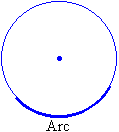
A sector is the part of a circle between two radii.
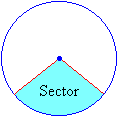
A segment is the part of a circle that is between a chord and the circumference.
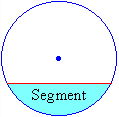
A semicircle is a half of a circle.
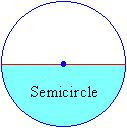
Compass
A compass is an instrument used to draw circles or the parts of
circles called arcs. It consists of two movable arms hinged together
where one arm has a pointed end and the other arm holds a pencil.
Note that a compass is also called a pair of compasses.
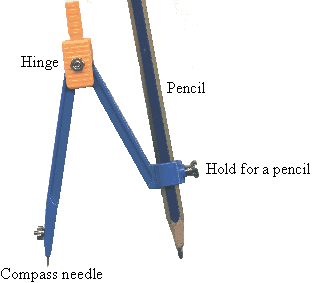
To draw a circle (or arc) with a compass:
- make sure that the hinge at the top of the compass is
tightened so that it does not slip
- tighten the hold for the pencil so it also does not slip
- align the pencil lead with the compass's needle
- press down the needle and turn the knob at the top of the
compass to draw a circle (or arc)
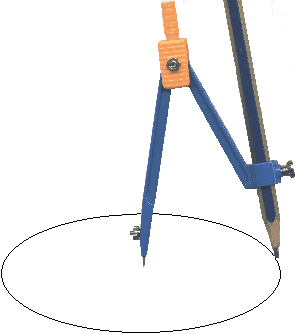
Example 2
Use a compass to draw a circle of radius 4 cm.
Solution:
Step 1: Use a ruler to set the distance from the point of the compass to
the pencil's lead at 4 cm.
Step 2: Place the point of the compass at the centre of the circle.
Step 3: Draw the circle by turning the compass through 360º.
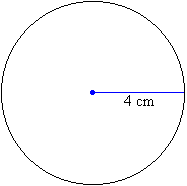
Activity 10.1
1. Use a compass to draw a circle of radius 5 cm.
2. Use a compass to draw a circle of diameter 12 cm.
3a. Use a compass to draw a circle of radius 4.5 cm.
3b. Draw the diameter of the circle; and use a ruler to measure the
length of the diameter.
3c. Write an equation to represent the relation between the radius, r,
and the diameter, d.
4a. Use a compass to draw a circle of radius 5.5 cm.
4b. Draw a diameter and label it PQ.
4c. Draw a triangle PQR where R is on the semicircle.
4d. Use a protractor to measure the size of angle PRQ.
5a. Use a compass to draw a circle of radius 6.5 cm.
5b. Draw a diameter and label it PQ.
5c. Draw a triangle PQR where R is on the semicircle.
5d. Use a protractor to measure the size of angle PRQ.
6a. Use a compass to draw a circle of radius 7.5 cm.
6b. Draw a diameter and label it PQ.
6c. Draw a triangle PQR where R is on the semicircle.
6d. Use a protractor to measure the size of angle PRQ.
7. Use the results of questions 4, 5 and 6 to complete the following
statements:
a. The size of the angle on the diameter of a circle with a vertex on
the circle is …
b. If a triangle is drawn in a semicircle using the diameter as an
edge, the angle touching the curved part of the triangle is …
Key Terms
circle, centre of a circle, radius, perimeter, circumference, radii, circle lines, secant, chord, diameter, tangent, circle parts, arc, sector, segment, semicircle, compass, pair of compasses |